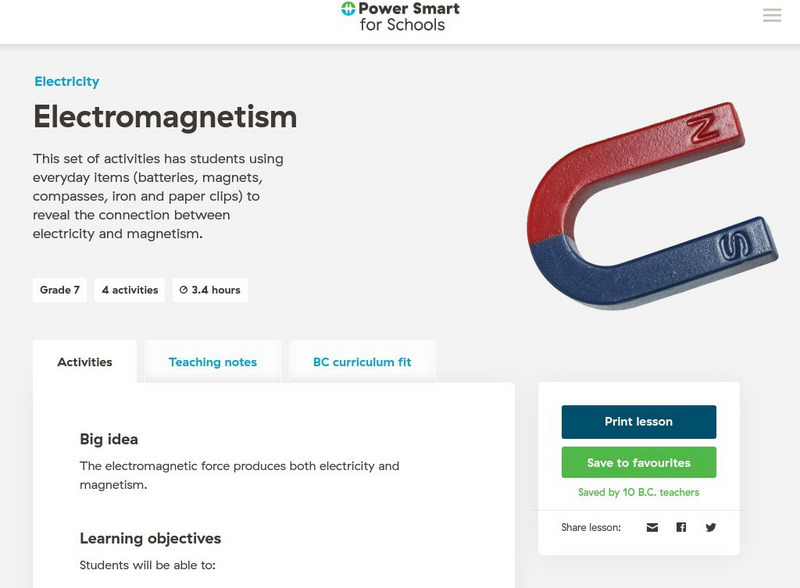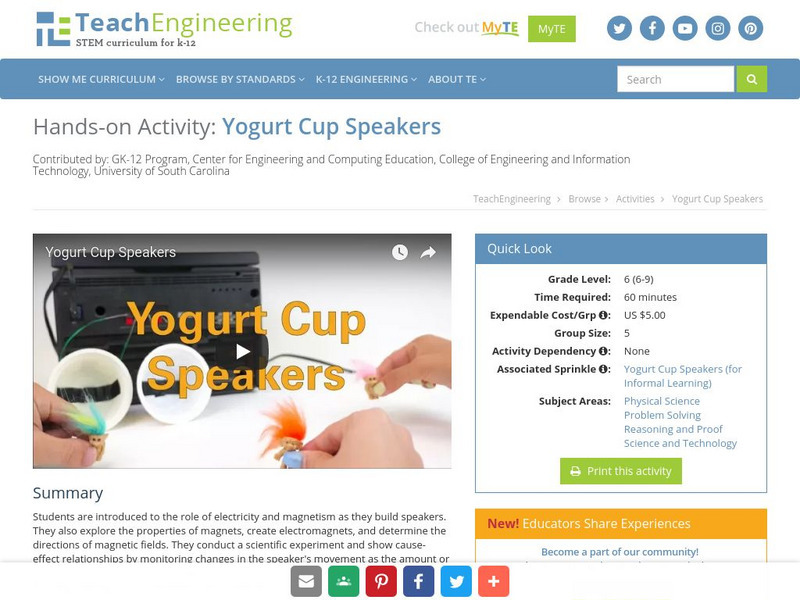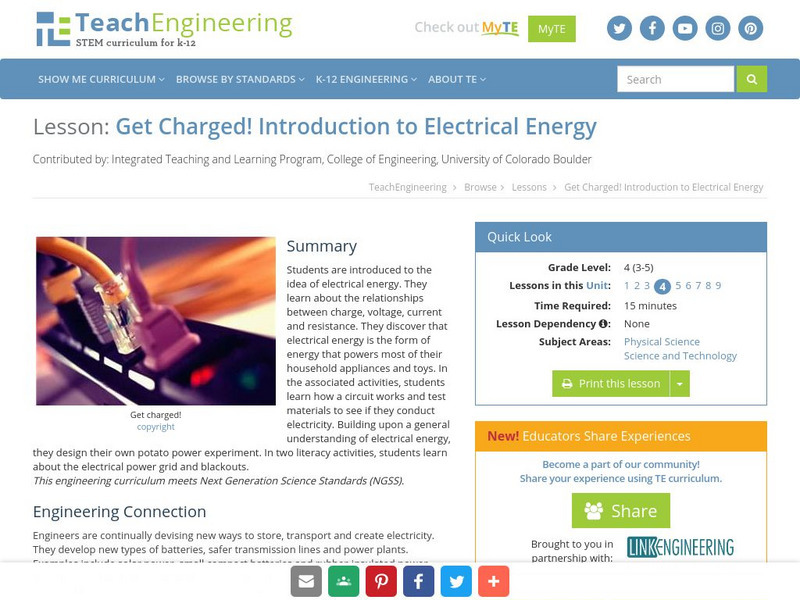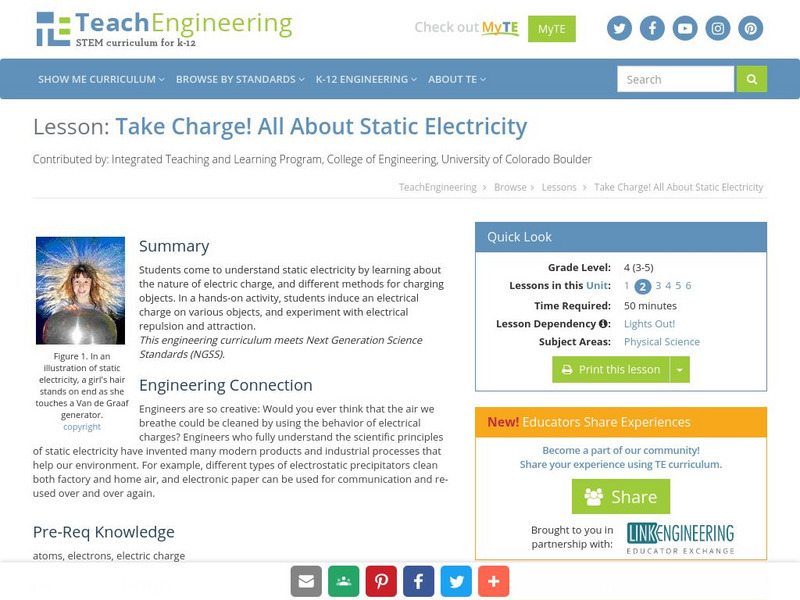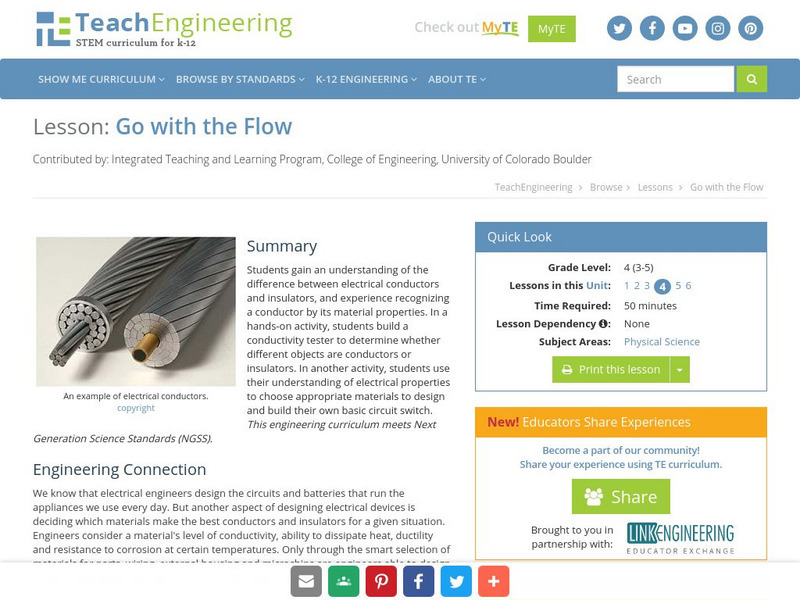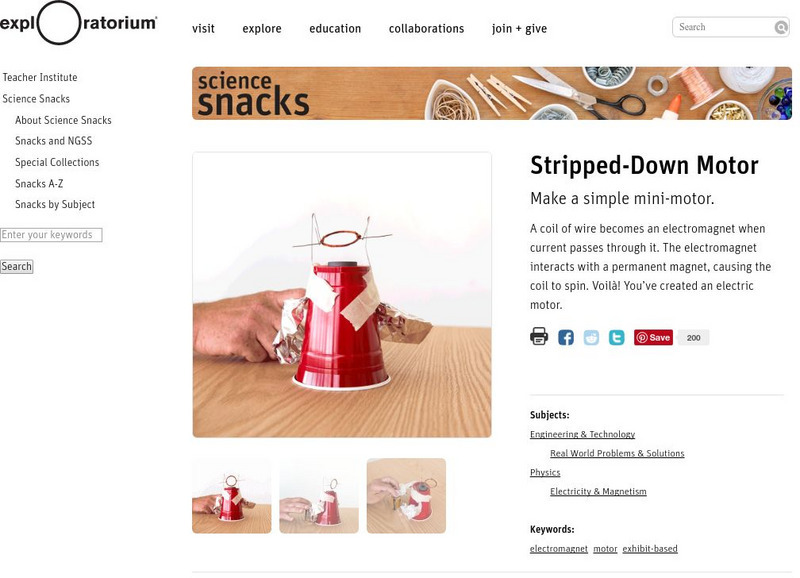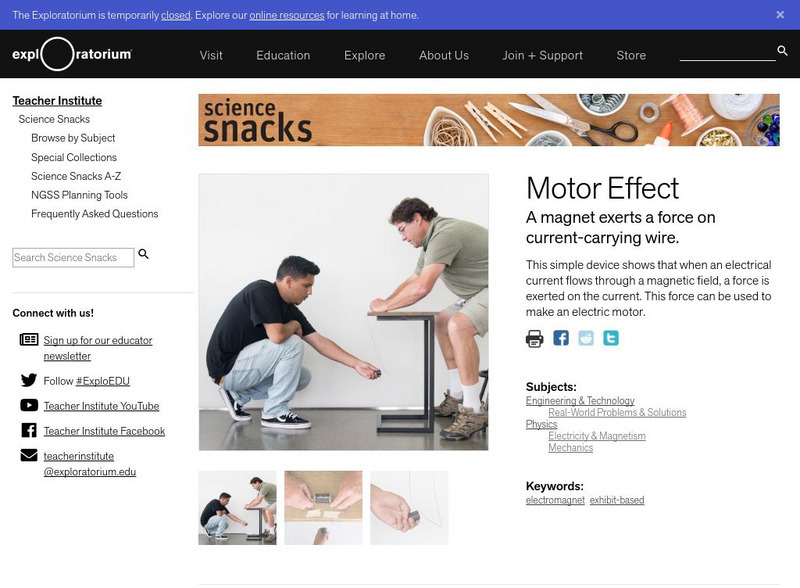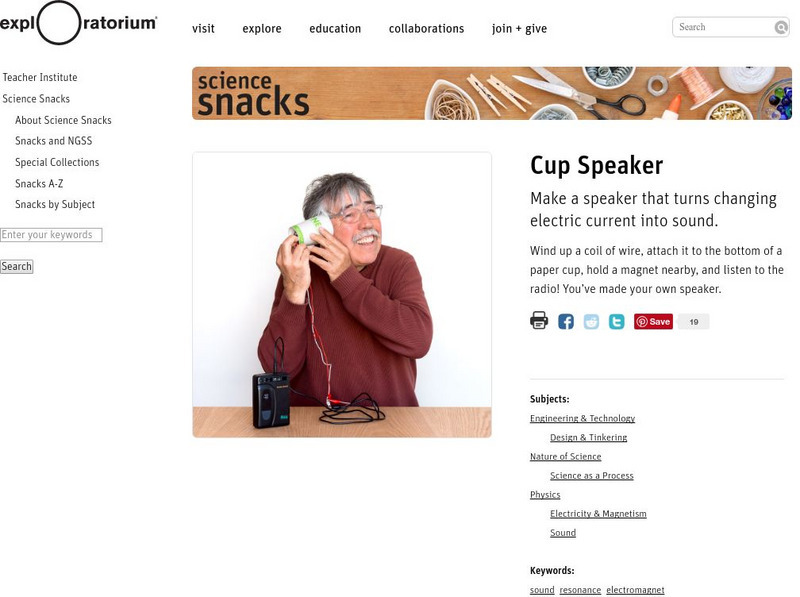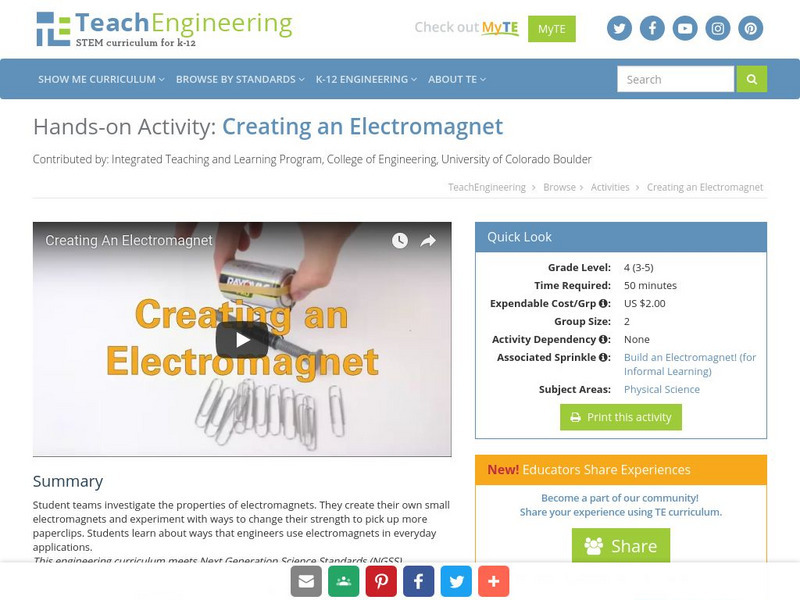Other
Bc Hydro: Power Smart for Schools: Electromagnetism
This set of activities has middle schoolers using everyday items (batteries, magnets, compasses, iron and paper clips) to reveal the connection between electricity and magnetism. Ideally, students will already have experience building...
TeachEngineering
Teach Engineering: Simple Coulter Counter
Students build and use a very basic Coulter electric sensing zone particle counter to count an unknown number of particles in a sample of "paint" to determine if enough particles per ml of paint exist to meet a quality standard. In a lab...
Science Education Resource Center at Carleton College
Serc: Investigating Magnetism
In this physical science lab, students will investigate ways to control an electromagnet, how adding coils of wire can change the magnet, and the differences between an electromagnet and a bar magnet. Students will explain in their...
Independence Hall Association
U.s. History: The Electric Ben Franklin
If it has to do with Benjamin Franklin, then you will probably find it here. There is much information about Franklin, his lightning experiment, Philadelphia, the Declaration, and more.
National High Magnetic Field Laboratory
Magnet Academy: William Gilbert
William Gilbert was an English physician and natural philosopher who wrote a six-volume treatise that compiled all of the information regarding magnetism and electricity known at the time. The work included descriptions of many of...
Other
Tech Topics: Electricity: Circuits
What is a circuit? How does it work? The animated diagrams and accompanying text will make it easy to understand the concept of circuits!
Other
Experiments on Air by Henry Cavendish
Cavendish's 1785 original paper on phlogiston and air. Fascinating reading.
TeachEngineering
Teach Engineering: Yogurt Cup Speakers
This lesson introduces students to the role of electricity and magnetism as they build a speaker. In addition, students explore properties of magnets, create an electromagnet, and determine the direction of a magnetic filed. They conduct...
Read Works
Read Works: The Shocking Truth
[Free Registration/Login Required] An informational text about Ben Franklin's discovery of electricity. A question sheet is available to help students build skills in reading comprehension.
Ducksters
Ducksters: Kids Science Projects and Experiments: Electric Circuit
Kids learn by experimenting with science. Project on building an electronic circuit.
TeachEngineering
Teach Engineering: Get Charged!
Young scholars are introduced to the idea of electrical energy. They learn about the relationships between charge, voltage, current and resistance. They discover that electrical energy is the form of energy that powers most of their...
TeachEngineering
Teach Engineering: Take Charge!
Students come to understand static electricity by learning about the nature of electric charge, and different methods for charging objects. In a hands-on activity, students induce an electrical charge on various objects, and experiment...
TeachEngineering
Teach Engineering: Go With the Flow
Students gain an understanding of the difference between electrical conductors and insulators, and experience recognizing a conductor by its material properties. In a hands-on activity, students build a conductivity tester to determine...
Exploratorium
Exploratorium: Science Snacks: Magnetic Suction
An experiment to find out how an old-style doorbell works.
Science is Fun
Science Is Fun: Bending Water
An experiment where static electricity is used to 'bend' a stream of water flowing from a faucet. Includes a detailed explanation of how this works.
Exploratorium
Exploratorium: Science Snacks: Magnetic Pendulums
See how electricity and magnetism interact with this activity. Activity has students creating a current by swinging a copper coil through a magnetic field. The copper coil will start a second coil swinging as well.
Exploratorium
Exploratorium: Science Snacks: Stripped Down Motor
Learn how to make an electric motor in this simple activity.
Physics Aviary
Physics Aviary: Practice Problems: Mass and Speed of a Particle
Determine the mass and speed of a particle being fired through variable magnetic and electric fields. This problem is done after students determine the charge of an electron using the Millikan Oil Drop Experiment.
Exploratorium
Exploratorium: Science Snacks: Motor Effect
Create a simple device to see how a force is exerted on a current by a magnetic field. This activity shows how an electric motor can be made with this force.
Exploratorium
Exploratorium: Science Snacks: Cup Speaker
This activity will have students creating their own speaker with a paper cup, coil of wire, and magnet. The speaker operates by changing electric current into sound.
TeachEngineering
Teach Engineering: Building an Electromagnet
Student teams investigate the properties of electromagnets. They create their own small electromagnet and experiment with ways to change its strength to pick up more paper clips. Students learn about ways that engineers use...
Colorado State University
Little Shop of Physics: The Amazing Physics of Everyday Objects
Try out these experiments you can do with items you might already have around the house: "Two Ball Bounce," "Cartesian Diver," "Straw Flute," "Bernoulli Ball," and others. Two experiments, "Imploding Pop Can" and "Balloon in a Bottle,"...
Exploratorium
Exploratorium: Science Snacks: Flying Tinsel
Can you make tinsel fly? In this activity, experiment with positive and negative charges to suspend tinsel into the air!
Concord Consortium
Concord Consortium: What Are Nature's Building Blocks?
Activity 3 of this module investigates: How do we know what's inside an atom? From Ernest Rutherford's Gold Foil Experiment to his investigation of the Plum Pudding model, students become aware of the Nuclear Model of an Atom. Also in...


